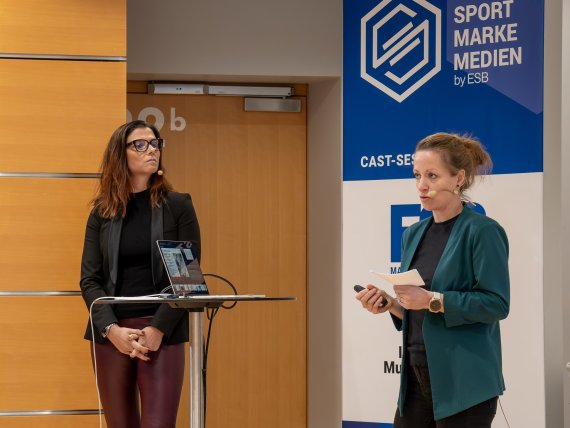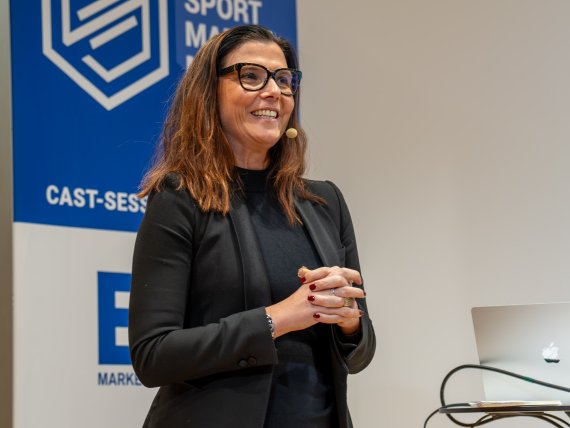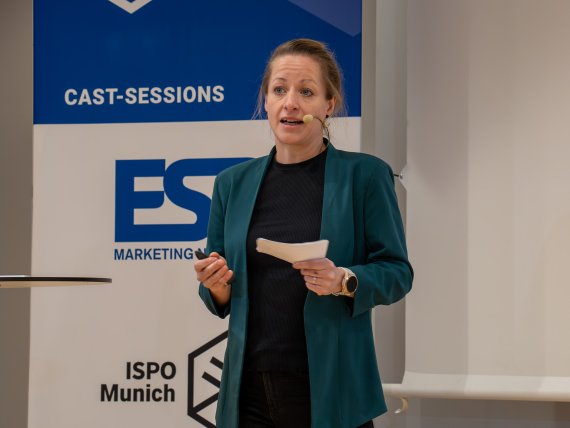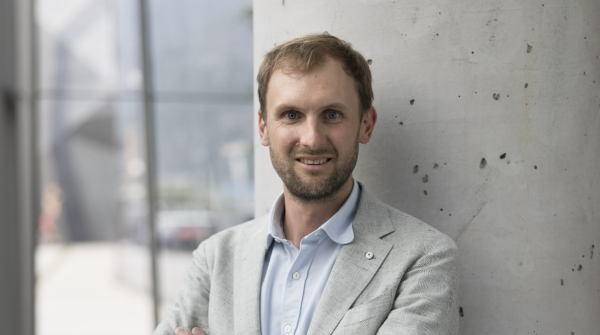The session began by setting the stage with two contrasting examples, the UCI Road World Championships in Zurich and the Tour de Suisse in Switzerland. While the former is a unique, one-off event in itself, the latter is an 8-day annual road cycling stage race.
Elisa Schorno, Head of Finance, ProTouch Global, explained how fast these formats shape financial planning from the start
With the one-off events, we tend to go from the project budget, which then covers several years. For recurring events like the Tour de Suisse, we usually work from an annual budget that repeats, adjusted year by year.
Elisa wasn’t done yet. She highlighted that the World Championships required setting an initial budget as early as 2019, four and a half years before the races began. That meant planning without the final team in place, while relying on very rough estimates. Inflation, hotel costs, and accessibility requirements all changed during that time.
On the other hand, the Tour de Suisse has the advantage of “experience values." As Gabriela Buchs, Co-Director of Event Operations, 2024 UCI Road & Para-Cycling Road World Championships Zurich, put it
You take the previous year and maybe the last three years, adjust depending on the canton you do it. The experience is extremely important.
This difference sets the tone that while one-time events are built on uncertainty, recurring events build on history.
One of the biggest differences in Zurich was just how early the process had to begin. Negotiations with the UCI started in 2019, and an agreement was signed in 2020, years before Elisa officially joined as Head of Finance. She described the challenge
Already four and a half years before the event, you have to set up something that will always serve as the basis for financial control. But the people responsible for implementation are not yet on board.
That disconnect created tension. The early “initiative budget” was often too rough, missing critical details like barrier-free infrastructure. Gaby recalled
At first, inclusion was forgotten. Things like ramps or toilets for accessibility, these details came up later and had a big impact on the budget.
By contrast, at the Tour de Suisse, the budget cycle is shorter and led by the same people year after year. As Gaby noted,
The same people budget and also have to implement it. That makes it much easier.
This shows how timing can shape financial accuracy. The earlier you start, the greater the uncertainty. Yet, starting early also had its benefits.
Elisa explained that the long lead time gave Zurich the chance to think big, and said
We could set ambitious goals for inclusion and sustainability because we had years to plan. Even though those goals stretched the budget, they gave the event a clear identity.
Gaby agreed, adding that such projects also create stronger political connections
When you start years in advance, you bring the cities, cantons, and stakeholders on board much earlier. That can make a difference when problems appear later.
Planning an event can be challenging - that’s why SPORT BRAND MEDIA chose Wasserman as their presenting partner
For their conference at ISPO 2025, SPORT BRAND MEDIA partnered with Wasserman, a global leader in sports and entertainment management, to bring expertise, creativity, and seamless execution to the event. Wasserman, with over 3,000 employees across 28 countries, specializes in consulting, marketing, and developing tailored solutions for brands and rights holders, as well as managing athletes and artists. Through Wasserman Live, the company will design the visual experience of the congress, including event spaces, interactive installations, and innovative brand activations, creating an immersive connection between sports, brands, and media for all participants.

Budgeting sounds straightforward, but the speakers made it clear it’s anything but. Elisa described how financial staff depend entirely on operational input:
As a financier, I can only collect the information, I can’t think of it myself.
She explained the tools, such as profit and loss statements, investment planning, and liquidity forecasting. But even with structure, things can be missed. For the Zurich event, the VIP tent became a problem when ramps and lifts had not been considered early enough. Costs rose unexpectedly. Gaby reflected on this gap and said,
At the beginning, it was really rough. You think of everything, but in detail many things are missing. Then suddenly you realize, oh, this is still needed.
At the Tour de Suisse, the process is far more precise. The budgeting is done bottom-up, with area managers and sales teams feeding in numbers. Elisa said,
We start with the operative people who plan their costs and revenues. I’m just the counterpart who asks for the information.
Want to gain more insights from industry experts in order to grow your business?
Then find out how ISPO brings the sports industry together to share strategies, practical solutions, and insights from leading international brands.
Cash flow appeared to be one of the most critical challenges. Elisa compared it to the “march table” in cycling, which shows how fast riders will pass a point. She explained.
We want to know how we get through the rounds in terms of liquidity.
Planning inflows and outflows is vital, yet timing often creates stress. Sponsorships may come late, catering income is uncertain, and supplier payments often cluster around the event. Elisa admitted.
You can neither project them in height nor in timing,
Gaby emphasized the value of multi-year contracts
It makes everything safer and more plannable. You can agree on certain account payments with long-term partners. It’s much better than one-year deals.
Elisa agreed, pointing out that public funds provided strong security in Zurich, while last-minute sponsorship deals brought risk. She said
Revenue-dependent incomes like ticketing often come only after the event.
That creates pressure, because costs must be paid upfront. The takeaway was clear: liquidity planning is the lifeline of big events. Without careful monitoring, even successful events risk financial collapse one day.

Just as a race has intermediate sprints and final standings, financial management requires constant tracking. Elisa described project controlling as “the ongoing update of project success, to assess the risk.”
For Zurich, this meant constant revisions to the initial rough budget, especially as offers and contracts came in very late. She revealed
Valid forecasts only came three to six months before the World Cup.
At the Tour de Suisse, updates are less frequent because the base budget is already reliable. But Elisa warned against complacency
You should not neglect asking again and again and checking every position, even with recurring events.
Gaby positioned herself as a generalist, relying on experts to dive deep into accounting. She explained
I look at the overall picture. But the interplay between finance and operations is extremely important.
This shows that financial control is not a one-time activity. It’s rather a continuous process, adapting as real numbers replace projections.
One theme that stood out was the unexpected cost of inclusion. The UCI Para-Cycling Road World Championships in Zurich were the first fully inclusive cycling World Cup, hosting para and non-para athletes together. That meant barrier-free infrastructure was essential but it was not fully considered in the early budget.
Gaby recalled the surprises
You think it’s just toilets but then it’s ramps, tents, lifts. Suddenly the VIP tent was built in two pieces, and then we realized it didn’t work at all. It became too expensive.
These details highlight how values and vision directly impact finances. The drive for inclusion added complexity and costs, but also created an event that was historic and deeply meaningful.
As Elisa put it
You must fight for your reserve position. You can’t define the content when you’re discussing it, but you can be sure it will be needed.
Hidden costs will always appear, whether from inclusion, weather, or last-minute requirements. The solution is not perfect planning, but flexible reserves.
Want to be the first to find out the latest insights from the sports industry?
Then subscribe to our free newsletter now and always be one step ahead.
Perhaps the most frustrating challenge discussed was the lack of knowledge transfer between events. Elisa explained that organizers often start almost from scratch. She noted
There are no IST values unless you have good connections to previous organizers.
Thomas asked why mistakes seem to be repeated. Gaby admitted
It starts with sponsoring and ends with project controlling. Much more would have to be fought for by the international association to make sure knowledge is passed on.
At the Tour de Suisse, knowledge sharing happens more naturally, with regular exchanges among organizers. But at global one-off events, the UCI provides guidelines yet little continuity. As Elisa pointed out
The UCI’s organizer guide is detailed, but every country is different. You can’t just copy and paste.
The result is inefficiency, repeated errors, and frustration for those who know things could be smoother.

Towards the end, Thomas asked a tough question: why take on the stress of a one-off World Championships at all, if it’s financially riskier than a recurring event?
Gaby’s answer was immediate:
It has a lot to do with emotions. To organize a big event and be part of it is something great. Especially with paracycling, for the first time they had the same stage, the same winning ceremony. These emotions are priceless.
Elisa added that one-off events also bring location marketing and social value. Cities and regions see them as investments beyond profit and loss. She explained
Value creation is often more important than the bottom-line result.
This exchange captured the heart of the matter. Finance is crucial, but so is meaning. Events are not just numbers; they are platforms for inclusion, pride, and legacy. Elisa also stressed that taking on such risk builds long-term capability
After a World Championship, your team is stronger. They’ve seen everything from early budgeting to last-minute crises. That expertise stays, and you can use it again.
Gaby added that such events also inspire volunteers and young professionals, saying
Many who worked with us in Zurich now want to stay in sport. That is part of the legacy too.
Managing the finances of major sporting events is less about perfect numbers and more about navigating uncertainty. The UCI Road World Championships in Zurich showed the risks of one-off events: early budgets, hidden costs, and constant revisions. The Tour de Suisse showed the benefits of repetition: experience values, reliable data, and smoother cycles.
Yet both also revealed the same truth that events depend on people, their expertise, their teamwork, and their willingness to adapt. And beyond the balance sheets, they depend on emotion. The pride of hosting a world championship, the inclusion of para-athletes on equal footing, the joy of fans along the roads, these cannot be measured in numbers alone.
In the end, finance is the backbone that makes such moments possible. And with better planning, stronger reserves, and real knowledge transfer, the future of large events can be both financially secure and emotionally unforgettable.
Discover how successful events come to life at the SPORT BRAND MEDIA Conference during ISPO 2025. Experience the congress firsthand through dynamic event spaces, interactive installations, and innovative brand activations, all designed to create an immersive connection between sports, brands, and media. The conference takes place on 01 and 02 DEC.
- Start early, but stay flexible: Budgets made years ahead will change.
- Keep reserves: Unexpected costs are guaranteed, so never let go of your reserve position.
- Prioritize liquidity: Cash flow planning is as important as revenue forecasts.
- Share knowledge: Build stronger structures for passing on lessons, rather than reinventing the wheel.
- Balance finance with vision: Inclusion, accessibility, and emotional impact add costs, but also add lasting value.

 Sports BusinessSki Mountaineering Goes Olympic: What Milano-Cortina 2026 Means
Sports BusinessSki Mountaineering Goes Olympic: What Milano-Cortina 2026 Means
- ISPO awards
- Mountain sports
- Bike
- Design
- Retail
- Fitness
- Health
- ISPO Job Market
- ISPO Munich
- ISPO Shanghai
- Running
- Brands
- Sustainability
- Olympia
- OutDoor
- Promotion
- Sports Business
- ISPO Textrends
- Triathlon
- Water sports
- Winter sports
- eSports
- SportsTech
- OutDoor by ISPO
- Heroes
- Transformation
- Sport Fashion
- Urban Culture
- Challenges of a CEO
- Trade fairs
- Sports
- Find the Balance
- Product reviews
- Newsletter Exclusive Area
- Magazine


